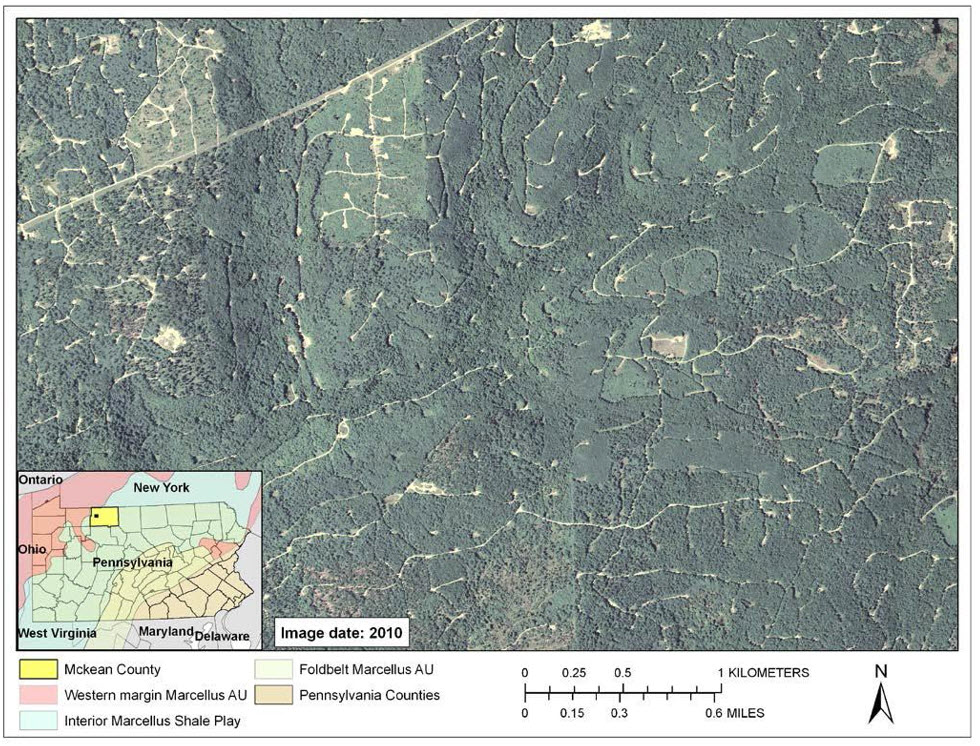High-resolution imagery from the National Agricultural Imagery Program (NAIP) was used to digitize the landscape disturbance related to hydraulic fracturing (“fracking”) and other forms of hydrocarbon extraction activity throughout the Marcellus Shale region of Pennsylvania from 2004 to 2010. Specific topological features such as well pads, pipelines, and roads were extracted and developed into a temporal Geographic Information Systems (GIS) database to characterize the spatial footprint of unconventional (hydraulic fracturing) and conventional oil and gas development. USGS researchers used these data to measure the spatial extent of oil and gas development and to assess the exposure of the extant natural resources across the landscape of the watersheds in the study area. The project found that either form of development (1) occurred in ~50% of the 930 watersheds that defined the study area; (2) was closer to streams than the recommended safe distance in ~50% of the watersheds; (3) was in some places closer to impaired streams and state-defined wildland trout streams than the recommended safe distance; (4) was within 10 upstream km of surface drinking water intakes in ~45% of the watersheds that had surface drinking water intakes; (5) occurred in ~10% of state-defined exceptional value watersheds; (6) occurred in ~30% of the watersheds with resident populations defined as disproportionately exposed to pollutants; (7) tended to occur at interior forest locations; and (8) had more than 100 residents within 3 km for ~30% of the unconventional oil and gas development sites. Furthermore, the study found that exposure to the potential effects of landscape disturbance attributable to conventional oil and gas development was more prevalent than its unconventional counterpart.
http://egsc.usgs.gov/ms_sum.html

High spatial resolution imagery from the National Agricultural Imagery Program (NAIP) was used to digitize the landscape disturbance related to hydraulic fracturing (“fracking”) and other forms of hydrocarbon extraction activity throughout the Marcellus Shale region of Pennsylvania from 2004 to 2010. Specific topological features such as well pads, pipelines, and roads were extracted and developed into a temporal GIS database.

